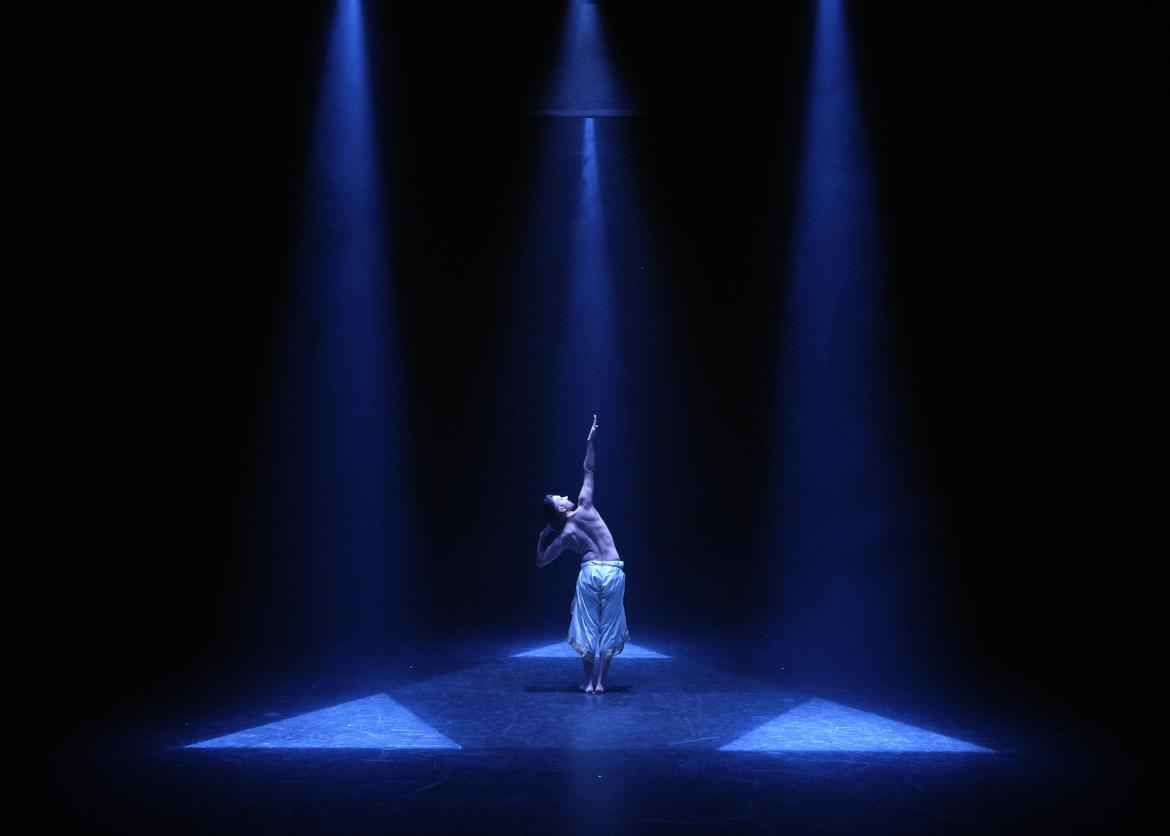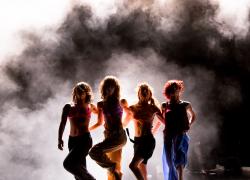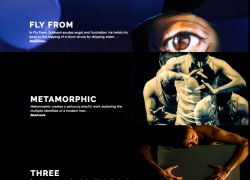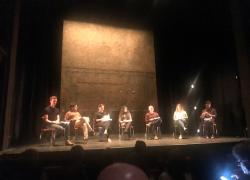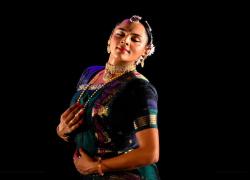Classic Encounters-Subhash Viman Gorania
23 October 2019
The Curve, Leicester,
Reviewed by Sanjeevini Dutta
Classic Encounters, a full length solo performance by Subhash Viman Gorania is at several levels a coming-of-age piece. It follows his journey as a dancer from the received forms of his gurus to the more individualistic and experimental style that he relishes in the concluding item. His life story forms a backdrop connecting the four chapters: the playful Krishna, the powerful and majestic Shiva, the feminine energy of the Devis and finally the many-headed imaginary beast that grapples with the dancer as his body becomes a battleground for completing styles that twist and turn him.
Each of the four dance works has been created by a different choreographer and composer (an impressive list of internationally known collaborators), and there are even two named lighting designers. The scope and ambition of the piece is enormous as it sums up is the dancer’s life work. A voice track that runs over the performance describes the experience of being bullied as a child and beaten up as a teenager which eventually led to his dropping out of education. The unfulfilled love for painting (referenced by setting an easel on stage right) is replaced by dance as a form of self-expression. The dancer pauses between items to paint a small section of the canvass.
The opening piece, Priye Charusheela by Chitralekha Bolar, is a gentle and loving evocation of Krishna: as child firstly being talked to and cajoled; later as a mischief-making youth feigning innocence; and lastly as an idol whose presence seems to turn to air as the devotee or friend tries to hold on to him. Subhash’s movements and hand gestures have great clarity and there is a sense of ease and unhurriedness in his rendition. The forms of kathak and bharatanatyam blend imperceptibly and make a pleasant opening item.
The bharatanatyam solo on the Lord of the Dance, Tani Avaratanam is beautifully crafted by Rukmini Vijayakumar, full of vigorous, broad movements and filigreed details. The item has spaciousness and moments of stillness that conjure the qualities of Shiva, who embraces the paradox of movement and stillness. The coverage of space, use of levels and the rhythm patterns feel fresh and original. The soft-focus hazy light of centre stage contrasts effectively with the dancer lit by sidelights as he moves to stage left against a black curtain –a veritable bronze figurine. Subhash shows impressive technique: well delineated postures, swift and clear movements executed with grace.
The upright stance of bharatanatyam is challenged in Preeti Vasudevan’s Nine, in which the feminine side is explored. The lotus flower hand gesture becomes the emblem and the starting point for sequences of movement. Jerky, cranky strokes of popping and locking jostle with classically held postures. A lighting pattern of green triangles move around the space in which the dancer must land between fade-outs.
In the climactic piece of the evening, Metamorphosis, the rectangles of light become the metaphor for the compartments of the dancer’s life. Like the shops in an Indian market selling ‘club’ or ‘bhangra’ or ‘bollywood’ or ‘classical’ these are the styles along with street and hip-hop that are open to the dancer. A trip to India unleashes a frenzy as the dancer flips between the styles offered, testing where he belongs. The musical score by Raghu Dixit and Niraj Chag incorporates a fun bol created by Hindi words making a sort of nonsense rhyme ‘Rasta chodo rukho beevroof/ Gora kala mardunga’. Veena Basavarajiah in collaboration with Subhash has created a signature piece of depth and complexity that the evening has been leading up to. With the pull and pushes of modernism will the dancer be able to hold on to the posture of the flute playing Krishna?
The evening bombards the viewer with a plethora of imagery and movement styles. The referring back to the dancer’s ‘ordinary being’, the bald facts of his life between items interfere with the suspension of disbelief of the audience. This was an artistic choice by director Gary Clarke who stepped in to give a cohesive vision drawing in the disparate elements. There is no doubt that Classic Encounters is a rewarding evening of dance, rich in textures of sound, light and movement, bridging the classical and urban cultures of past and present, of here and there. It is an important story of one dancer’s journey told with humour and humanity.

